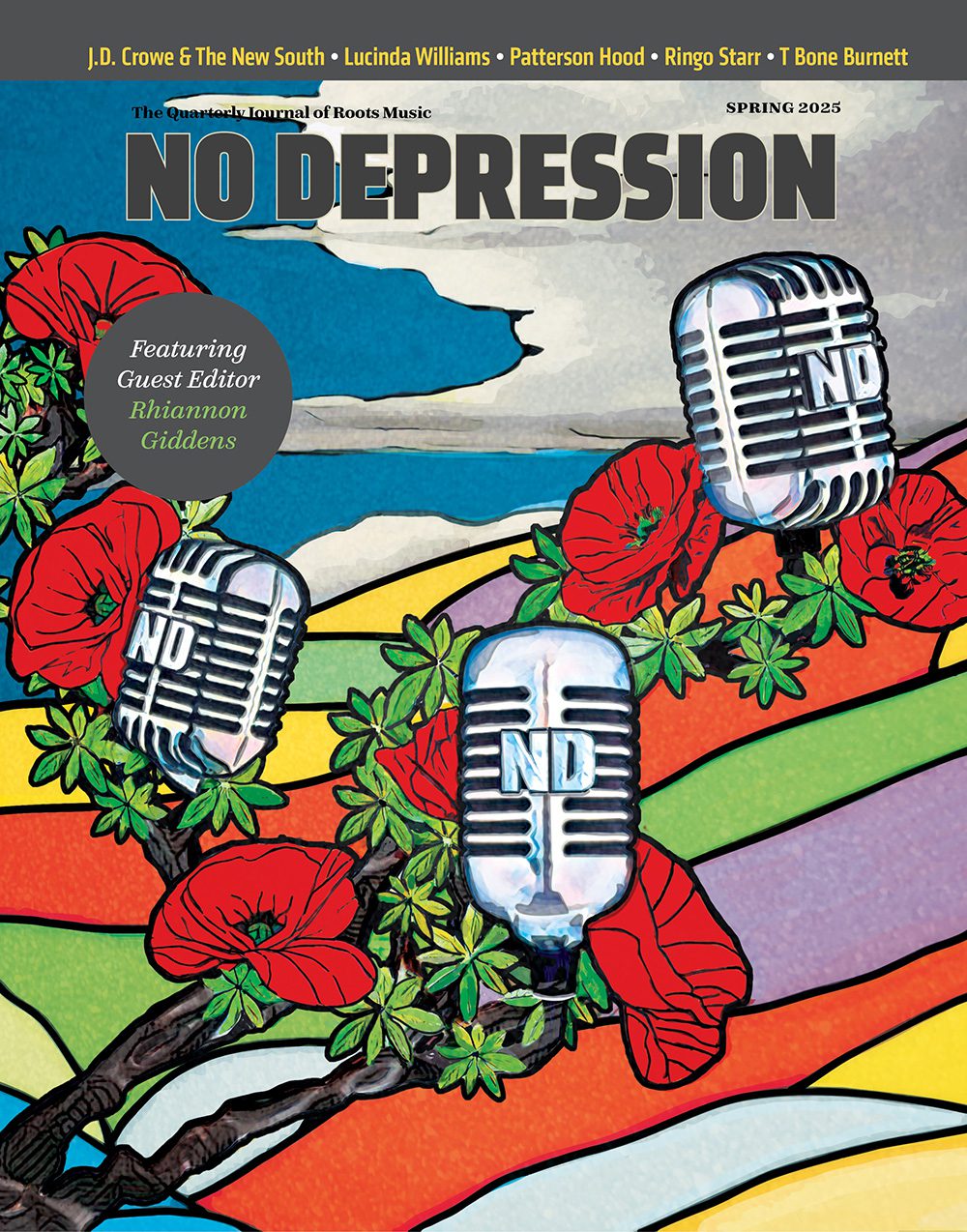Are You Ready for the Country?
“Country” is a fine word, and it’s always been one of my favorites, mostly because, like all the best words, it can mean so many things. Apply it to music and it can suggest a hundred different sounds, from the Carter Family to Patsy Cline to Willie Nelson to Whiskeytown. But apply the word to the land — the usage most of us probably became familiar with earliest — and it spans still further spectrums. Country is the opposite of city, and in that sense it helps reinforce its namesake, country music, as an animal distinct from more citified forms such as rock and jazz and rap (though the blues greedily envelops urban and rural components). The country is where you go when you leave town for the weekend, maybe to the grandparents’ house, maybe to camp or fish or hunt or hike.
But when we say we’re going to the country, precisely what kind of country are we talking about? There’s Appalachian country, spawner of bluegrass and mountain music. There’s the Texas Hill CountryTM, home to Kerville’s country-cousin folk festival. There’s Montana’s big sky country, home to whatever ranchers and militiamen listen to. And there’s the generic green-grass-and-shade-tree country of farming communities hosting barn dances all across this great…umm…country.
Whatever country is, the majority of us don’t live there. For most of my life, I lived in Houston, but by dint of recent circumstance, home is now the tiny West Texas town of Terlingua (population xxx). The country I live in is what most people would call desert — the Chihuahua Desert to be specific, where its northern branch reaches up out of Mexico into deepest West Texas near the Rio Grande convergence of the U.S. and Mexico. In fact, one of the joys of this particular region of country is that, by a mere 17-mile drive, you can leave the country altogether.
There’s no grass here, and little you’d call soil, just drought-dusted rock and sand and clay and limestone. Aside from the elevated alpine island of the Chisos Mountains in Big Bend National Park, and a few willows and cottonwoods clinging to the banks of the Rio Grande, there are no trees, just prickly pear, ocotillo, lecheguilla, agave, creosote bushes, cholla cactus, century plants, and mesquite (which is technically a tree, but not much of one, though it’s handy if you’ve got a cord chopped by the time the bitter desert winter blows in). Shades of brown, not green, are the dominant colors; even the Rio Grande often runs a muddy shade more akin to cream-heavy coffee than riverfresh green or blue. As for local fauna, the best summation of native living things comes from longtime locals: “If it doesn’t sting, stick, bite, or break your heart, it just doesn’t live out here.”
And this country, like all kinds of country, has ties to a music that raises the specter of its landscape. Given this landscape is within the porous borders of Texas, it’s no surprise that the musicians who best personify its character consider the boundaries of country music to be as porous as those of the state itself. Head up the road to Lajitas, wade ankle-deep across the river, and see if you don’t know whereof Jimmie Dale Gilmore speaks on Braver Newer World when he sings about finding himself over the line. Go a little further back with Gilmore, to Spinning Around the Sun, and check out those sleeve photos of him walking barefoot into the mouth of Santa Elena Canyon, thousands of feet of water-carved stone looming identical on either side — one Mexico, the other Texas, the river trickling by underfoot, unaware.
Gilmore, to my mind, is the defining country music presence of this borderland, but he’s not the only one. Joe Ely has a metaphorical home here with his Spanish-ish balladeering. Jerry Jeff Walker even named his best album Viva Terlingua! And Butch Hancock — songwriter extraordinaire, peripatetic photographer, and designer of the world’s only known (if uncompleted) adobe airplane — has recently moved into a little house near the old ghost town.
Hancock performed at Terlingua’s Starlight Theater a few weeks back, standing in the corner with the tiny P.A., just him and a guitar, strumming free for the locals who come here because this, and only this, is where the drinks are, and for the tourists who show up to take a guided raft-float through one of the Rio Grande’s incomparable canyons. The porch-talk has it that Hancock has come here to work on a book in the peace and quiet of this particular country.
But Hancock is an anomaly in our midst. If you want to see a touring band, you’ve got to go to town, which means Alpine (pop. 5,637), home to a tiny beer-and-bands dive called Railroad Blues. Since that’s 160 miles round-trip, most of our music is locally generated. And if much of it isn’t what you’d habitually call country music, it’s deeply rooted in its place. The girl behind the keyboards is a teacher at the local one-size-fits-all school that opened just last year. The guy strangling the Telecaster is the local hermit, and my nearest neighbor. The drummer plays in every band in town (so to speak). The mariachis from across the border sit in during the second set, and the vocals are as likely to carry a Mexican trill as any down-home twang.
It’s the kind of border-straddling country music that Gilmore, Ely, Hancock et al., not to mention the locals, appreciate and embrace. Maybe it’s no coincidence that the two concepts, the musical and the geographic, share a word. Maybe country music, most broadly defined, is music that springs from a country landscape, music with a regional base and a regional basis. Maybe country music, to the extent that it’s distinct from other categories, is music that’s planted, and grows, in a particular patch of earth.



